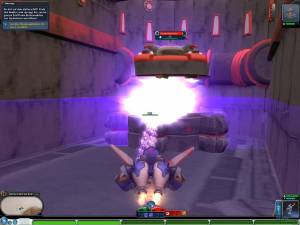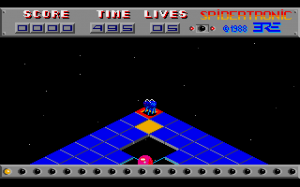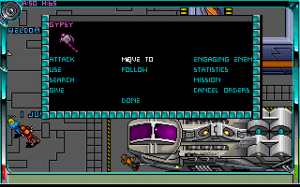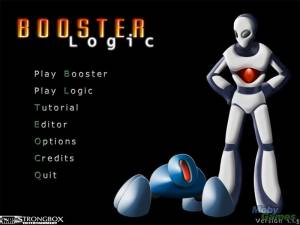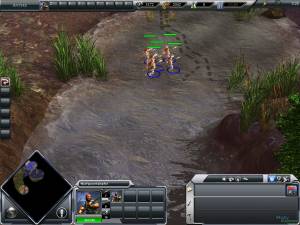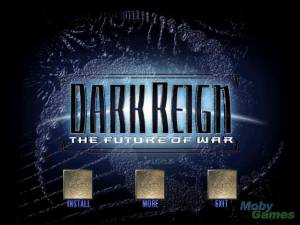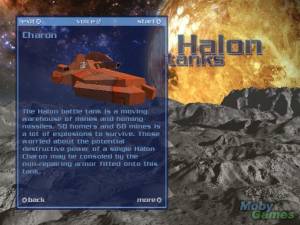Game Classification
StarCraft II: Wings of Liberty Blizzard Entertainment Inc., Blizzard Entertainment Europe, 2010
Classification
VIDEO GAMEKeywords
Market
This title is used by the following domains:- Entertainment
Audience
This title targets the following audience:Age : 12 to 16 years old / 17 to 25 years old
General Public
Gameplay
The gameplay of this title is Game-based(designed with stated goals)
The core of gameplay is defined by the rules below:
Similar games
 Victory looks different. Yes, the United Earth Directorate is no more and the Overmind has finally been destroyed. The Terran world Tarsonis now lies in ruins, as does the Protoss homeworld of Aiur. The Queen of Blades, formerly known as Sarah Kerrigan, is still out there and Arcturus Mengsk's administration turns out to be even more dangerous than the Confederacy. No wonder that four years after the events of StarCraft: Brood War, Jim Raynor is trying to drown his sorrows with booze, while helping the rebels on Mar Sara in the fight against Mengsk's Dominion.The trot changes, however, when one day Tychus Findley, imprisoned for life by the Dominion, shows up proposing a deal. Soon after that, Backwater Station is overrun by the Zerg, who are now the dominant species in the Koprulu Sector, revealing an invasion of the Terran systems. So, Raynor retreats to his flagship, the battlecruiser Hyperion, and once again enters the fight for survival - and the search for his beloved Kerrigan.
Victory looks different. Yes, the United Earth Directorate is no more and the Overmind has finally been destroyed. The Terran world Tarsonis now lies in ruins, as does the Protoss homeworld of Aiur. The Queen of Blades, formerly known as Sarah Kerrigan, is still out there and Arcturus Mengsk's administration turns out to be even more dangerous than the Confederacy. No wonder that four years after the events of StarCraft: Brood War, Jim Raynor is trying to drown his sorrows with booze, while helping the rebels on Mar Sara in the fight against Mengsk's Dominion.The trot changes, however, when one day Tychus Findley, imprisoned for life by the Dominion, shows up proposing a deal. Soon after that, Backwater Station is overrun by the Zerg, who are now the dominant species in the Koprulu Sector, revealing an invasion of the Terran systems. So, Raynor retreats to his flagship, the battlecruiser Hyperion, and once again enters the fight for survival - and the search for his beloved Kerrigan.
StarCraft II: Wings of Liberty is the first part in the StarCraft II trilogy. As such, most of the 29 missions of the single-player campaign have the player fight on the Terran side. There are, however, a few missions where the Protoss Zeratul gets to tell parts of his side of the story, with the player controlling him and his Protoss friends. Most of the missions feature different and changing objectives but are, at their core, all about real-time strategy, with the player more often than not having to build up his base from scratch, collect the two resources, produce and upgrade an army and fight the usual suspects: other Terrans, Zerg and Protoss. The gameplay is pretty straightforward RTS, using a rock-paper-scissors system in combat between the three very different races, with each unit vulnerable to several other units and vice versa.
As the campaign progresses, the player automatically gains access to new units, which he can then upgrade in the Armory of the Hyperion in exchange for money, also earned throughout the missions. Each unit and some of the buildings can be upgraded two times, unlocking new abilities for the unit. The stimpack for the Marines, for example, which allows them to do more damage for a short amount of time at the expense of some health.In addition, there's the Laboratory on the Hyperion. Here, the scientists research Zerg and Protoss DNA, which the player collects during missions by fulfilling bonus objectives. These range from simply gathering samples from dead Zerg to killing a hulking Brutalisk. After each five tiers of the DNA double helix, the player can choose between two possible upgrades in each research tree, allowing him, for example, to either automate the collection of Vespine Gas or build two SCVs at once. Once both research trees have been completed, each additional DNA artifact is sold for a sum of credits.
The third deck on the Hyperion is the bridge. Here, the player chooses one from up to three missions as his next assignment, has the ability to replay both the in-game cutscenes and the rendered sequences and replay old missions, e.g. on a higher difficulty level to earn additional achievements or to discover the consequences of different choices as the branching plot unfolds.
The fourth deck is the Cantina. Here, the player can look at trophies earned for completing a story strand (e.g. all missions given by Tychus), watch the news, hire mercenaries (who will then become available in all upcoming missions in exchange for resources) or play a round of "The Lost Viking". The latter is a full-blown vertical-scrolling shooter like Raptor: Call of the Shadows, built with the included Starcraft Galaxy Editor and featuring many elements of the main game.
StarCraft II: Wings of Liberty also offers an extensive multiplayer mode which differs greatly from the single-player experience. The player can play as any of the three races but the available units differ in part from the ones available to him in the campaign. The Terran Medic, for example, has been cut - only the flying Medivac can be built. Nine challenges are available to test the abilities of the player to e.g. know which units are best against others or how to survive the infamous Zerg rush.In addition, after entering the multiplayer, the player has to play several practice rounds during which the game judges his skill and throws him in one of the five leagues (Bronze, Silver, Gold, Platinum and Diamond) and activates the match-making feature. Here, or in custom games, he can fight against up to eight players on 61 maps, some of which are specially made beginner's versions of other maps to prevent early rushes. The maps are divided into several categories based on type of gameplay, like coop, simple free-for-all or team matches, and the amount of players; eight being the largest number of players a map can hold. Bots are available to fill up open slots and additional achievements are waiting to be earned in order to unlock new avatar pictures or troop banners. [source:mobygames]
Distribution : Retail - Commercial
Platform(s) : Macintosh - PC (Windows)
 Français
Français English
English






